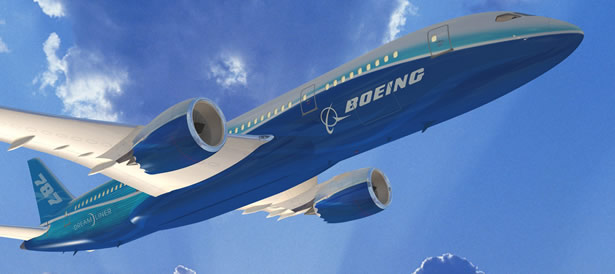
Boeing Canada Technology Winnipeg Division began its operations in 1971, starting out with 50 employees. Since that time, the Winnipeg Division has evolved into Canada largest aerospace composites manufacturer with 900 direct employees. The Division has been major contributor to Boeing’s numerous aircraft models through the years, supplying fairings and other specialized composite parts for lines such as the 737, 747, 767, 777, and now the new 787.
The Winnipeg Division prides itself in staying at the forefront of composites technology to meet the needs and design aspirations of the aerospace industry. As a result, Boeing Canada Technology has long been a champion of the composites cluster concept in Winnipeg. The Composites Innovation Centre serves as a foundation for this type of initiative, assisting composites-related companies in being globally competitive.
“We see the CIC as an integral part of our future collaborative development technology projects,” says Eugene Manchur, Engineering Manager with Boeing’s Winnipeg Division. “The intent is to be competitive and create new markets, with applications in new and current airplanes, as well as potential non-aerospace projects.”
The CIC and Boeing have been collaborating on an ongoing project to explore and develop lightweight and low cost fairings for new aircraft programs. The project involves the investigation and testing of alternate materials, tooling methods and process methods to establish lower cost and higher quality composite aircraft parts. The CIC and Boeing are also collaborating on several other advanced technology programs.
“We are collaborating on advanced technology development that will be applicable not only to the new 787 airplane, but to other current and future airplane models as well,” Mr. Manchur says.
While Boeing’s Winnipeg Division continues to be fully immersed in the highly competitive aerospace industry, they are also hoping to further diversify and explore new cross-sectoral opportunities. In that regard, the CIC has been assisting Boeing in establishing new composites partnerships.
“To a greater degree over the last year, we’ve used the CIC as a focal point to coordinate external collaborative projects and to help us network and link to other collaborative partners,” Mr. Manchur says. “Looking at cross-sector opportunities, the CIC has much more access to work across the various non-aerospace sectors than we do.”
Looking to the future, Boeing sees the CIC as a key partner. “The CIC is instrumental to the composites cluster’s future,” Mr. Manchur says. “The amount of work they’ve accomplished on our behalf, even in their short existence, is phenomenal.”
